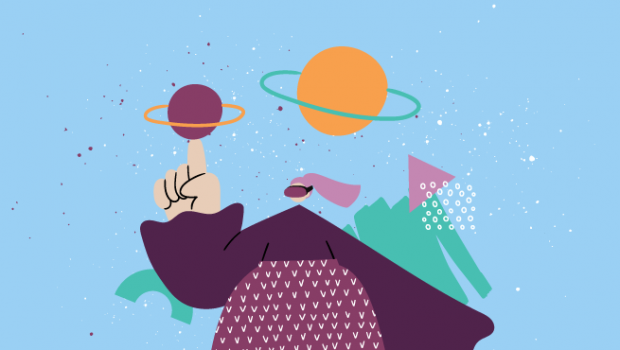Creative Technology Will Help Us Craft Differentiated Experiences
In a world where customer expectations are skyrocketing and competition isn’t backing down, playing it safe won’t lead to success. There’s a growing need to wow customers and leave a long-lasting impact. As part of The Drum's Creativity in Focus Deep Dive, DPDK’s chief technology officer Bill Marks discusses the power of creative technology and its role in delivering immersive experiences to attract, engage, and retain customers.
From augmented reality to artificial intelligence, technology has transformed the customer experience (CX) landscape. Technology enables brands to ramp up their productivity, communicate with the masses, and create new customer touch points.
Where is creative technology taking us next?
But technology alone can’t differentiate your brand, especially when your competitors have access to the same tech stack, market knowledge, and customer insights. To truly wow customers, brands need to get creative and find innovative ways to keep them hooked.
The true power of technology lies in the creative possibilities it brings. Creativity and technology are an excellent pair, even though they're often seen as opposites. When combined, they open up new avenues for brands to attract and engage customers.
The latest marketing news and insights straight to your inbox.
Get the best of The Drum by choosing from a series of great email briefings, whether that’s daily news, weekly recaps or deep dives into media or creativity.
The case for creative technology
Customer expectations are at an all-time high. We’re living in the age of 'and', where combining form and function is no longer optional; it’s the new norm. There’s a need for engaging and seamless experiences. That’s where creative technology comes in.
The relationship between creativity and technology is often misunderstood: creativity involves thinking outside the box and straying from the norm, while technology focuses on efficiency and productivity. Because of this sharp contrast, the two are seen as polar opposites, but in reality they go hand-in-hand.
Technology is a creativity enabler. Creative technology brings together the best of both worlds: it creates innovative and immersive experiences that pique customers’ interest and keep them engaged.
Creative technology in action
Creative technology brings exciting new opportunities for experience-makers. A compelling example of creative technology is the use of brain-computer interface (BCI) technology. BCIs create a direct connection between the human brain and a computer by analyzing brain activity and translating it into commands. These commands are then carried out by an output device. You can perform an action simply by thinking about it, no movement required.
BCIs are groundbreaking for the healthcare industry, but more recent research has investigated its creative applications, particularly in gaming. BCIs have the potential to change the gaming industry by enabling developers to create experiences that go far beyond what we could have ever dreamed of. Imagine playing a video game and carrying out tasks without needing to move a muscle. It will be a while before BCI games enter the mainstream, but companies like Snap and Valve are already working on developing videogames that leverage BCI technology.
Another interesting example of creative technology is 3D visualization, which involves creating three-dimensional models of real life objects. Instead of merely showcasing an object, 3D visualization offers the chance to experience and interact with an object in a digital environment, in the same way you would in real life. This requires creative coding.
Creative coding refers to programming that focuses on creating expressive rather than functional outputs. That includes artwork, creative experiences, data visualizations, robotics, and anything 3D-related. One of my favorite examples of creative coding is Moonbridge, a design tool developed by DPDK’s very own front end architect Colin van Eenige. Moonbridge is a design tool that enables users to create stunning WebGL transitions. WebGL is a JavaScript application-programming interface and the foundation for everything 3D online.
Moonbridge is a developer’s creative playground: a space for developers to flex their creativity, explore different code transitions, and create 3D experiences.
It shows what’s possible with creative coding because its functionality can be applied to any interactive application.
Most memorable digital experiences are more than websites or applications with information. They are digital adventures that allow you to experience what something like driving a car or wearing a shoe feels like. Like Ikea Place, Ikea’s app that lets users virtually place true-to-scale 3D models of Ikea products in their homes. That way users can see what products would look like in their space without having to step foot in an Ikea store.
Looking ahead
New technologies are constantly emerging, and brands will continue to invest in them to gain a competitive advantage. But the truth is, technology on its own won’t set you apart. How you use that technology to fuel your creative ideas and bring out the DNA of your brand will.
Making the most of creative technology starts with rethinking how you view technology: not (just) as a tool for efficiency and productivity, but also as a catalyst for our creative capabilities. It’s time to embrace creativity and technology as a dynamic duo and use creative technology to our (and our customers’) benefit.
Creative technology is here to stay. The most distinctive experiences are those that not only meet but exceed customer expectations. Let creative technology lead the way.








Gloss